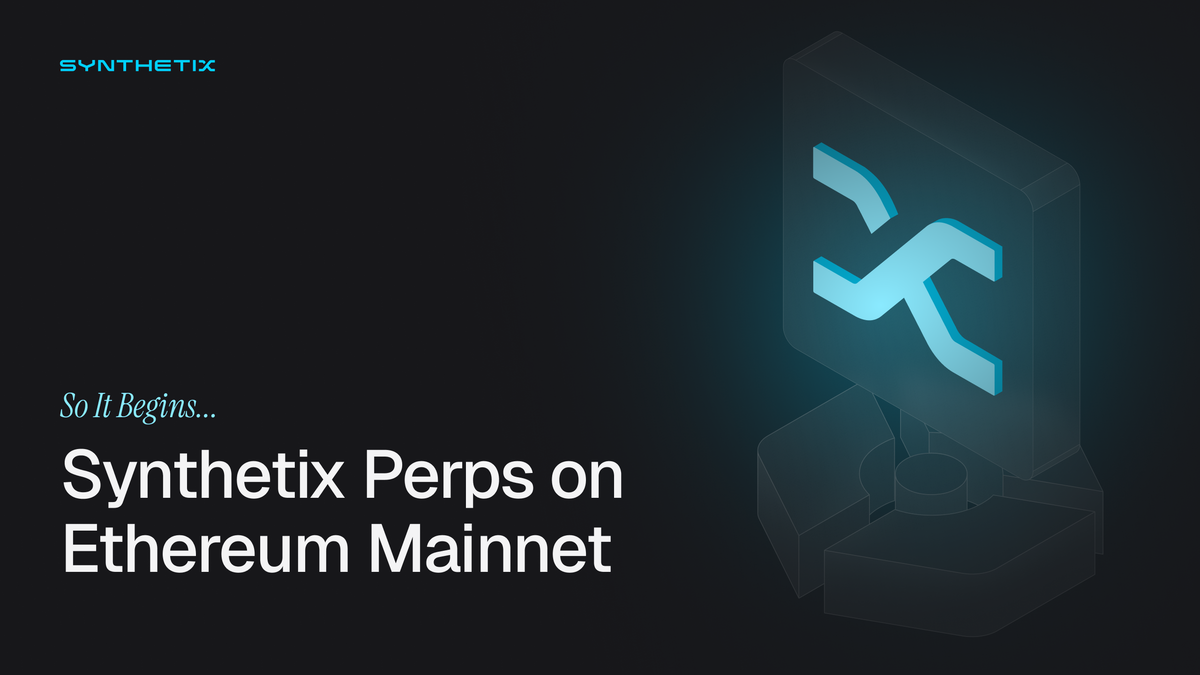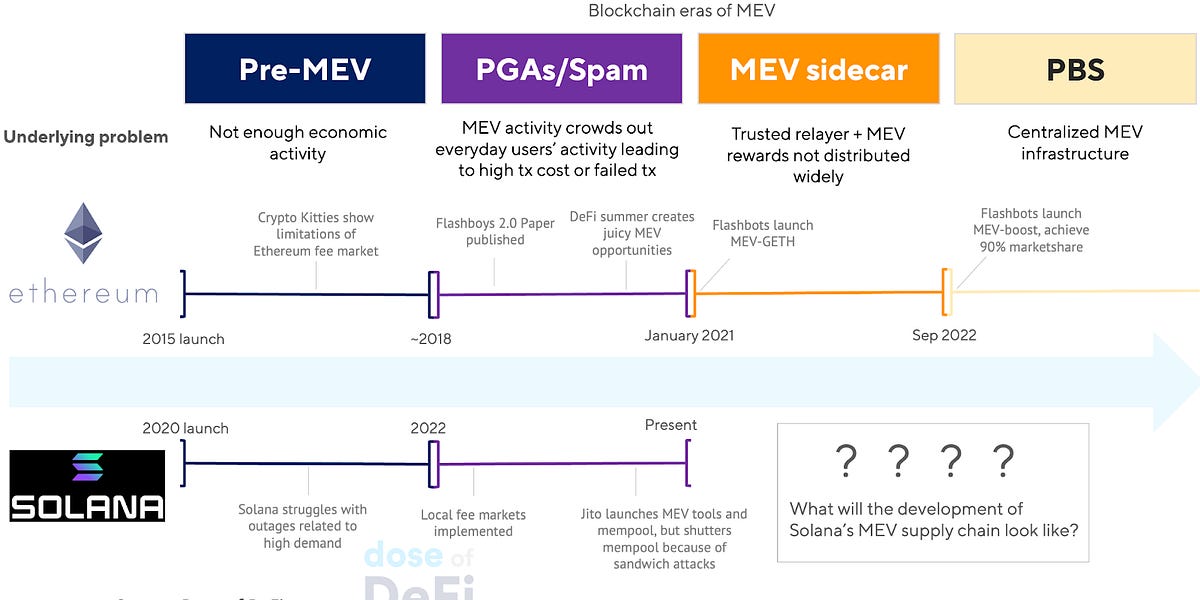Listen to this article!

Donald Trump’s memecoin launch on the eve of his inauguration was nothing short of sensational. Within days, $TRUMP soared to an $14 billion market cap, with Melania Trump’s $1.6 billion memecoin following closely behind. This spectacle dominated headlines, sparking debates across the crypto ecosystem. Is this a pivotal moment that legitimizes the industry? Or more a glaring reminder of its speculative underbelly?
Crypto is winning — there’s no doubt about that anymore. Even a laypersons’ quick look at the current price of Bitcoin would solidify this. But a harder question lies ahead: what kind of crypto vision with the largest cultural impact will emerge? Will it be defined by the financial nihilism of $TRUMP, Bitcoin’s digital gold, Ethereum’s decentralized ethos, Solana’s global permissionless NASDAQ vision, or something altogether different? And perhaps most importantly, where will DeFi fit in? With $TRUMP, BTC, SOL and ETH seemingly at inflection points (more below), we expect to see DeFi playing a far more foundational role come the next presidential inauguration in 2029.
The launch of $TRUMP was a masterclass in leveraging attention and liquidity. Within 24 hours, the token’s price skyrocketed from $7 to $75, before stabilizing at $38. It became the 21st most valuable cryptocurrency overnight. By comparison, Melania’s memecoin, despite its strong debut, struggled to maintain momentum. Together, the Trump tokens epitomize the unpredictable nature of memecoin economics.
$TRUMP was unprecedented in scale. Previous memecoins like DOGE and PEPE took years to reach their current size but $TRUMP reached this in just hours, which leads many to wonder if this is just the beginning of tokens directly tied to public figures.
Critics have labeled $TRUMP a symbol of financial nihilism — a “get-rich-quick” scheme that undermines the credibility of crypto. Some more neutrally argue that $TRUMP represents the duality of crypto: it is both a tool for empowerment and a magnet for greed. While some celebrate $TRUMP as proof of crypto’s mainstream success, others warn that it sets a dangerous precedent, trivializing the space as a playground for speculation.
This spectacle has also reignited debates about the future of tokenization and its role in broader economic systems. As Noah Smith argues, memecoins like $TRUMP and $MELANIA embody the “slush fund” aspect of crypto: assets that allow individuals to bypass TradFi’s constraints while simultaneously fueling speculation. Whether this is a bug or a feature, you’d have to ask the Trumps. But we don’t think this is the post-modern future that cypherpunks and decentralization zealots signed up for.
Bitcoin is in a great spot, particularly with the pardon and release of Silk Road founder Ross Ulbricht, a move celebrated across the Bitcoin community. But where can it go from here? There’s the oft-touted Bitcoin Reserve, an idea that seems obviously bullish on the surface. Despite this, prominent Bitcoin enthusiasts have raised concerns on the reserve idea, questioning whether this could open the door for government co-option of Bitcoin’s inherently decentralized ethos. And that it would be silly for the U.S. government to prioritize a rival to the dollar.
This then begs the question: is Bitcoin chasing another level of adoption? As digital gold, it’s already had institutional buy-in, which is likely to serve as a long-term price driver. But Bitcoin once aimed higher. Hyperbitcoinization — a term describing the world running on Bitcoin as its primary currency — was the ultimate goal. Are we still on that path? At this point, it seems unlikely. Bitcoin’s trajectory is more akin to a widely accessible inflation hedge rather than a revolutionary societal currency.
Hyperbitcoinization, by definition, seeks a world where Bitcoin replaces fiat entirely. But to achieve this, Bitcoin must offer more than just price stability and ease of access, and its cultural and societal ambitions have largely taken a backseat. Whether it can reclaim that aspirational vision is an open question. But for now, Bitcoin remains a highly functional, if somewhat static, cryptocurrency.
Things are less rosy for Ethereum. Prices are falling, and sentiment within the community is increasingly negative, as evidenced by the growing trend of users abandoning their ‘.eth’ handles. Criticism of Ethereum’s leadership, which has been accused of being overly academic and disconnected from real-world applications, has grown louder. The top dogs are only now beginning to acknowledge the need for change, with Vitalik Buterin entering “wartime mode” (or just coincidentally changing his profile pic, Milady). Plus, a huge new ETH research post on native rollups was just posted by Justin Drake.
Ethereum still holds onto its ambition of building resilient, decentralized systems. However, its biggest hurdle is the lack of effective decentralized coordination. While Ethereum has been a foundational layer for DeFi, its inability to foster thriving DAOs has hindered its progress. This gap in decentralized governance could be what’s missing from Ethereum’s equation. DAOs, as a framework for decentralized decision-making, could unlock Ethereum’s next phase of growth. (Side author note: this is why I’ve spent the last few years focused on the DAO space, and now on Powerhouse).
DeFi remains Ethereum’s most successful application to date. Platforms that allow users to generate yield, trade assets, and interact with permissionless financial systems underscore its utility. However, Ethereum’s fragmented liquidity across Layer 2 solutions and a lack of cohesive governance risk its future dominance. The network must move beyond its current state and create a unified, scalable vision for decentralized applications. Just today, Vitalik dropped another banger: Scaling Ethereum L1 and L2s in 2025 and beyond.
Solana’s role as the blockchain for meme coins and high-performance applications continues to expand. While it’s true that running a Solana node requires significant compute power — which has raised concerns about potential government coercion — the network has demonstrated its value through memecoin trading. $TRUMP’s launch showcased Solana’s ability to gather massive amounts of liquidity on a single chain, although it did struggle to maintain uptime during the frenzy.
The area where Solana is most ahead is in token launches. Ethereum used to be clogged for NFT mints, but this got too expensive. Some L2s stepped in but none has been more successful than Solana. It’s clear now that if you want to “drop” a token, Solana has the best distribution even if it gets congested.
But can Solana leverage its momentum to expand beyond memecoins and secure a foothold in DeFi? While Solana is the favorite of new crypto czar David Sacks and is making major strides in its MEV supply chain and building high-performant DeFi systems, it’s noticeably behind in RWAs. Plus, it’s not clear that its advantages over Ethereum will carry over to a more regulated DeFi world. Relatedly, token sales are primed to make a comeback (make ICOs great again!). Will that look more like the burgeoning RWA market or the memecoin market?
The regulatory environment for crypto is entering a new phase with Trump in office, and perhaps more importantly, a more friendly Capitol Hill. The establishment of the SEC’s new Crypto Task Force, led by Commissioner Hester Peirce, marks a significant milestone. Tasked with creating a comprehensive and clear regulatory framework, the initiative aims to move beyond the SEC’s reliance on enforcement actions to regulate retroactively. Instead, the Task Force seeks to draw clear lines, provide realistic paths to compliance, and foster innovation within legal bounds. Meanwhile, Trump’s Strengthening American Leadership in Digital Financial Technology Executive Order sets an overall tone that is breeding optimism across crypto.
Stablecoins are likely to be what takes up most of the oxygen in Congress in 2025. There will be new rulemaking at the SEC and an abandonment of the regulation-by-enforcement approach, but legislation is the only way to make lasting change. Crypto did extremely well in the 2024 House and Senate races, so not only will there be more crypto allies, a Republican majority, but Democrats will be itching to showcase their moderate credentials and commonsense stablecoin legislation is a great opportunity to do that. Broader changes to securities law by congress may be hard to come by. But stablecoins and a friendlier SEC may be enough to create clearer pathways for token issuance, fostering broader adoption. Indeed, BlackRock CEO, Larry Fink, renewed his calls for tokenized bonds and stocks just this week.
We won’t make any price predictions for $TRUMP but we do think the cultural effect will be longstanding. Not because everyone will have a meme coin but because it will be the ‘aha moment’ for many digital asset investors around tokenization’s power to transform traditional assets into liquid, tradeable digital tokens. From equity-like structures to loyalty rewards, tokenization bridges gaps between ownership and utility in ways traditional systems never could. This extends beyond financial assets: think art, real estate, or memberships.
It’s not just new assets, but how tokens can act as both quasi-equity and functional tools for engagement with users/equity holders. Who knows what perks Trump will offer to $TRUMP holders, but the model could be replicated by others. Of course, for this to work, you need liquidity in these tokens, which is where DeFi needs to shine.
This isn’t a technical breakthrough; it’s a philosophical shift spurred by the launch of $TRUMP. The ability to tokenize anything fundamentally changes how people interact with assets, fostering transparency, reducing barriers to entry, and creating liquidity where previously none existed. It’s not just a technology, it’s a new way of thinking about ownership and value. Of course, this means there will be A LOT of shit coins. Watch out.
The $TRUMP phenomenon is a microcosm of crypto’s broader narrative: a mix of promise, peril, and potential. As memecoins capture headlines, the industry must grapple with the long-term implications. More specifically, on whether the future of crypto will be defined by speculative assets, or a return to its roots of decentralization and striving to create more efficient systems and real-world utility.
The road ahead is as much about preserving the values that define the industry as it is about embracing innovation. Censorship resistant money, stablecoins, and prediction markets have emerged as undeniable crypto use cases. DeFi, with its emphasis on transparency and programmability, offers a path forward and a foot in the door for decentralization.
To us, a world of systems, networks and institutions without centralized control is still the ultimate end game for crypto. And that means it’s not just about more efficient technology. It’s about a change in culture. Always has been. And we just don’t believe the $TRUMP memecoin represents such a change. Rather, the cultural shift is still about decentralization as it moves from the driving technological concept in crypto over the last 15 years to the most important political concept of the 21st century.
-
Circle acquires Hashnote and USYC Link
-
Erik Voorhees takes down Jack Mallers a notch or two Link
-
1kx, ParaFi and Framework lose appeal in legal battle against Curve founder Link
-
Crypto committee chairs for the 119th Congress Link
-
Block Analitica’s Sphere dashboard gives aggregated DeFi borrow rates Link
-
Liquity v2 launches on Ethereum Link
-
Uniswap plans release v4 this week and launch next week Link
-
Recording from Columbia CryptoEconomics Working Session Link
That’s it! Feedback appreciated. Just hit reply. January is cold and there is no sun. Boo. I’m in Denver next month if you’re around, get in touch!
*It’s surprisingly hard to get the AI image generators to do things with Trump in the prompt…
Dose of DeFi is written by Chris Powers, with help from Denis Suslov and Financial Content Lab. I spend most of my time contributing to Powerhouse, an ecosystem actor for MakerDAO/Sky. Some of my compensation comes from MKR, so I’m financially incentivized for its success. All content is for informational purposes and is not intended as investment advice.




